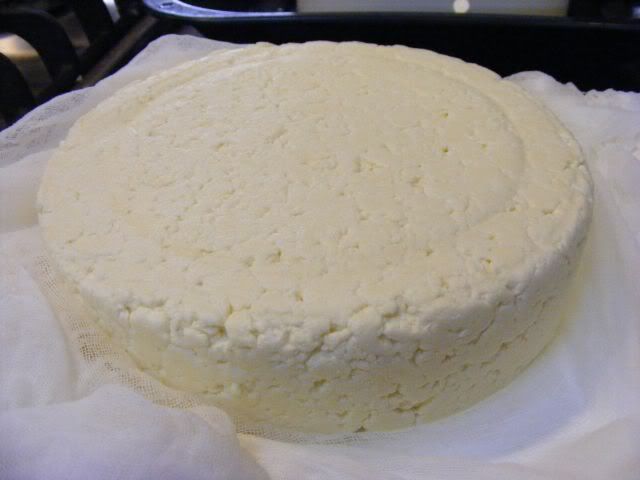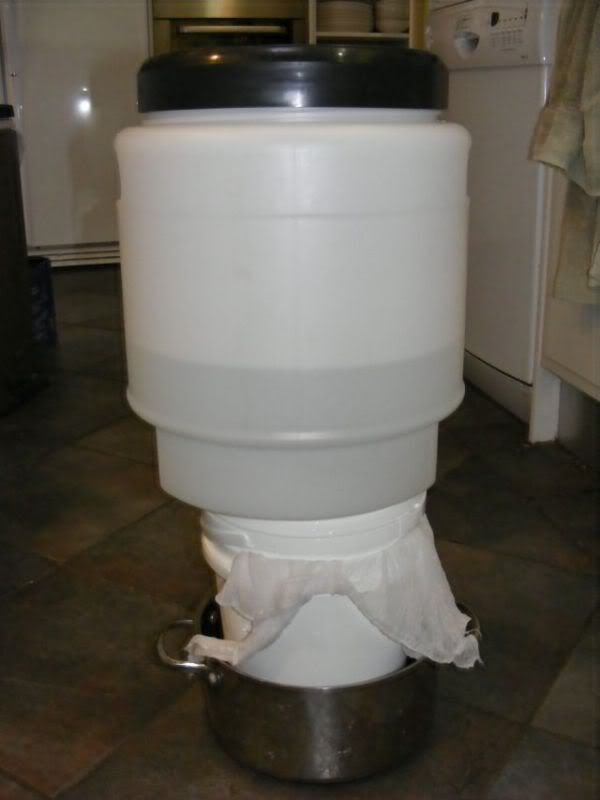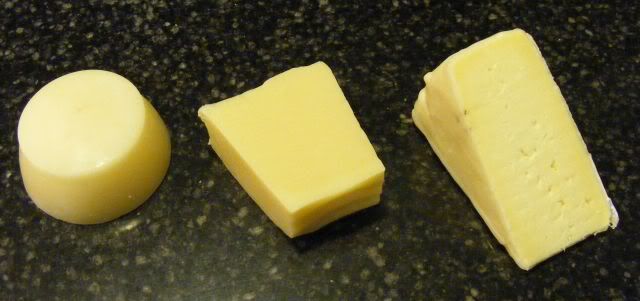I have been interested in cheese for a while and made a couple of fettas a while back, also a camembert that died in the wine fridge when we were without power for 10 days... (a long story!). A year has gone by and it seemed time for another go, so I found and joined this forum a few weeks back at about the same time as I got a copy of the Tim Smith 'Making Artisan Cheese' book. I decided it was time to try a pressed cheese and hit on the Caerphilly because it needed least maturing time.
At the beginning of June I made my first Caerphilly with 8 litres of pasteurised non-homogenised Jersey milk. It seemed to go to plan apart from two things - it set up very quickly, within 10 minutes, and the curds didn't press together too well. After a couple of weeks I had mould getting into the deep cracks between the curds so made up some wax by mixing beeswax with coconut oil (making it up as I went along here...) and waxed it after clearing off as much mould as possible. Finally last Friday we tried it. By the rate the first quarter disappeared I know it had general family approval. I matured in the wine fridge after shifting some of the bottles aside, at 11C

Here is the cheese during pressing, should it look as 'pitted' as this?

I made another mid June with less rennet but still set too quickly. Again it didn't press together very smoothly, so I waxed this one as soon as it had dried. It will be interesting to see how this one compares to the first, in a couple of weeks time. It is springier to the touch, through the wax, so no doubt moister inside.
In the meantime a friend has put me onto a source of raw milk so yesterday I made a Double Gloucester (Cotswold from the Tim Smith book, without the herbs) as that used to be a family favourite when we were in the UK. With the greater weight, this one has pressed together into a much smoother rind. Oh, and I finally spotted my error with the rennet - after adding it of course! - as I had my glasses on this time and could read the small print on the bottle which showed mine is a greater concentration than the recipe is set out for.
The DG is still pressing until 6pm tonight, here is my improvised cheese press (it has more water in it now for the final 50lb weight):

So, two questions arising from this which I would love some help with:
- is the pressed Caerphilly, with its pitted surface, what you would expect to see - or is it a result of using twice as much rennet as I should have used? The first had 3ml, the second only 2ml but still looked the same.
- re the Double Gloucester I have just made, I used 2ml in 8 litres, the bottle says max 2ml in 10 litres. Is this likely to affect my final result very much?
Thank you so much for all the wonderful information resources on here, not least the erratum to the DG recipe I just made, which I fortunately spotted before making it (salt was omitted from the recipe).
And finally, to give you a bit of a laugh and show you what my family has to endure - here are three of my recent projects: from left to right, beeswax - soap - Caerphilly cheese

Cheers!
Elaine